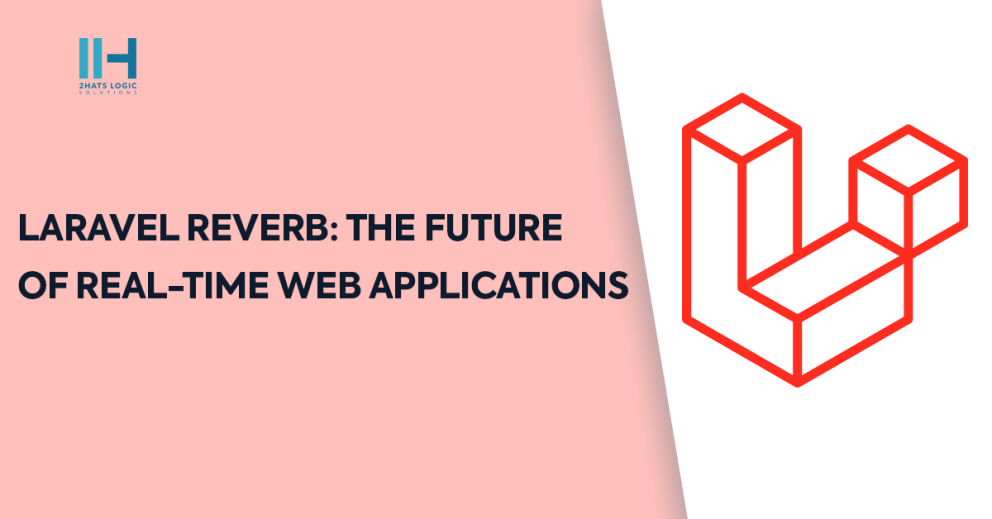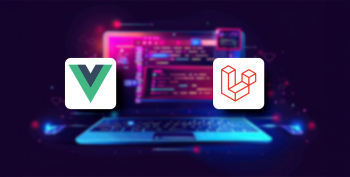Greetings! I'm Aneesh Sreedharan, CEO of 2Hats Logic Solutions. At 2Hats Logic Solutions, we are dedicated to providing technical expertise and resolving your concerns in the world of technology. Our blog page serves as a resource where we share insights and experiences, offering valuable perspectives on your queries.

Understanding Real-Time Web Applications
This platform helps the users in real time by providing live help and suggestions. Traditional chatting applications gradually evolved, and team collaboration systems, efforts made to improve these, and up-to-date data streaming architecture, all are involved. Such functionality will bring some benefits to the users: firstly, improved experiences of using the system, then enhanced productivity and making better decisions.
Exploring the Laravel Framework
Laravel is a PHP framework that features such as its neat syntax, fast functions, and the abundance of libraries, characteristics and other resources that comprise the great family that is the ecosystem of Laravel.
It has gained popularity among Laravel developers due to its ease and flexibility. Being one of the simplest tools for developers nowadays, it has a wide range of usages. However, a pertinent question that should be answered is: what makes Laravel stand out from the rest of the frameworks, and why should developers go for it for web development? The real journey is over when you conjure up Reverb, a package that assimilates with Laravel commands to give you the opportunity to get live functionality effortlessly.
What is a Laravel Reverb?
Laravel Reverb is a web development platform that comes packed with elements that facilitate the development of real-time websites. Right from the synchronous data syncing to the WebSocket integration, broadcasting events, queuing, and the job process, Reverb has a whole set of instruments that assist in building a web application that is dynamic and interactive.
Key features of Laravel Reverb
Data Syncing
This web development platform helps maintain the consistency of data throughout different client connections with its synchronisation feature. Thus, users can be assured that they’re looking at the same information throughout and that they are up-to-date with the changes.
Secure Communication
Security being the main thing in real-time web applications, Reverb will secure this through the encryption of data and authentication. The security measures employing the SSL/TLS to secure the WebSocket connections and token-based authentication lie at the heart of the system, hence, sleep will be sweet for the developers owing to the fact that the question of unauthorised access or data tampering is strictly a theoretical possibility.
Scalable Architecture
This web application has a scalability factor as one of its most significant properties. With the combination of a distributed architecture along with Redis being used, Reverb will be provided with the smooth scaling of higher traffic and more users without any possible compromise on performance or reliability.
Integration with Laravel Echo
Reverb brings a cool accompaniment on its arm – Reverb provides Pusher Protocol support, so it can easily integrate with the Laravel Echo JavaScript library, used to subscribe to the launched events just from your application. Developers can utilise the feature of laravel Echo package to join the channels of WebSocket.
Broadcasting Events
Broadcasting events to multiple clients at once is one of its core features. Thus, it speeds up the interaction between server and client, which eventually leads to the dynamic transmission of live updates and notifications in the application.
Continuous updates and innovations
We are proud of the fact that the community always strives to make constant improvements, Reverb is also not immune from it. By consistently releasing updates, enhancements, and optimizations, developers are certain to experience some new features, improvements, and variables that improve the performance, security, and functionality of Laravel Reverb, thus making it an excellent choice for live web development.
Web Applications in the Digital World
Web applications, in real time, find their points of use across different industries and use cases. The social media platforms survive on their live functionality and never hesitate to push instant updates and notifications to users. Collaborative tools and project management platforms let teams work more efficiently and productively by sharing instant experiences. The live chat and customer support systems facilitate immediate help for users, which contributes to a greater loyalty as well as customer satisfaction.
Getting started with Reverb
Starting off with Reverb is an uncomplicated process. With the package setting up Composer and the configuration of components, developers will be able to get up and running with an environment for their Laravel applications. The configuration of the WebSocket server and the implementation of real-time features are made easier by the intuitive Reverb APIs and documentation.
Best Practices For Laravel Reverb in real-world application
Few of the best practices for Laravel Reverb are as follows:
Optimising Performance
- Correcting the data synchronisation by minimising the communication speed and achieving the higher data transmission rate is necessary for network implementation.
- Use strategies such as cache and asynchronous processing; these will decrease the overall transaction time, and, accordingly, performance will increase.
Scalability Planning
- Ensure that vertical scaling is carried out concurrently at speed with all the real-time functionalities of Reverb.
- Develop an scalable architecture with the ability to cope up with the ever – growing user group while that information volume goes up.
- Implement new load balancing and scaling strategies, so as to spread the load and resources across all servers and instances.
Monitoring and Maintenance
- Prepare in advance communication actions and alerts to be able to spot and rectify operational defects or system breakups quicker than they occur.
- Constantly explore and study the logs, metrics, and results to pinpoint areas of consumptions that should be altered and the places that need to be improved.
Security Measures
- There is a strict authentication and authorization basis to defend information transmitted in real-time channels.
- Encrypt every traffic piece that customers will transmit from their device to the server to prevent anyone who may be tampering.
- Reinstallation of the Reverb with its dependencies ensuring the version is up to date with the security patched to fix the present security issues.
Error Handling and Fault Tolerance
- Real-time communication protocols that endure even with node misbehaving attitude and network failures to ensure that message is correctly delivered.
- Retry mechanisms, backup procedures, and widely-known-about circuit breaker techniques are a must to achieve the ability to withstand a possible failure.
Validation and Quality Assurance
- Load testing and stress testing must be used for checking the level of scalability and the resilience of communication channels under traffic.
- Regression testing must be done in order to make sure that the service will not be crashed just because it is not correctly connected to the other elements.
Use cases of Laravel Reverb
Live chat application
- Implement real-time conversation between users without having to reload the page.
- Provide instant messaging as a communication and engagement tool on websites and web applications.
- Include typing indicators, message delivery status, and user presence features as part of implementation.
Real-time notifications
- Deliver instant updates and remarks to users as regards important events and actions.
- Remind users about new messages, comments, likes or other similar important activities.
- Improve user experience by eliminating the delay of information provision.
Collaborative editing tools
- Ensure that people can work on documents, presentations, and similar content at the same time.
- Put in place real time device synchronisation.
- Fulfil the needs of smooth collaboration and communication among team members or project stakeholders.
Real-time dashboard
- Present live updates as well as data visualised for monitoring and analytics dashboards.
- Display the real-time metrics, statistics, and insights to users with automatic refreshes.
- Empower users through making fully-informed decisions based on up-to-date facts and trends.
Live event streaming
- Livestream events, webinars and conferences with the ability to interact in real time.
- Enable the audience to ask questions, comment or be actively involved through live interaction with presenters.
- Build virtual event experiences for users that are engaging and interactive.
Conclusion
This tool possesses great functions, developer-friendly APIs, and a huge eco-system that enables Laravel developers to create websites that are interconnected and futuristic, having the best of their features. The Reverb is among the front-runners of technology as we progress to more instant features in our digital interactions, in a sense reshaping how web development takes its course. If you require any services, partnering with Laravel development services can help you leverage these cutting-edge capabilities.
Why is Reverb a choice that is better than others of the PHP frameworks?
The platform has provided a wide range of tools that are applicable to real time web applications. From real time data synchronisation to WebSocket integration, event dispatching, and queuing, Reverb handles all database connections in the background, giving developers a nice interface for building dynamic and interactive websites without worrying about handling data access issues.
How does Laravel Reverb ensure security?
It is built on top of data encryption and authentication features. These secure WebSocket connections and token-based authentications ensure end-to-end data changing and transfer within the server and client is protected from illegal gaining of access or modification.
What tools for scalability does it provide?
Laravel is designed to be scalable by means of an architecture and Redis pub/sub communication. Talk can handle a hike in traffic, which results in no or meagre performance issues.
How does Laravel Reverb work in Laravel Echo?
Laravel Reverb combines with Laravel Echo, the JavaScript library that talks about the live events the apps send. The integration of Pusher Protocol support makes it possible for developers to subscribe to the WebSocket channels, which makes it easy to push live updates to the browser. This, in turn, helps create a more interesting user interface.
What kind of support and information can a developer expect?
The Laraval community concentrates on keeping up with the process and frequently releasing updates, bug fixes, and optimizations. Developers can be assured that they will be given periodic biweekly support and up-coming features, improvements, and optimizations that enhance its response time, reliability, and functionality, making it an ideal tool.

Related Articles









